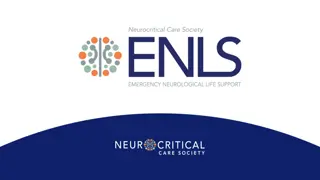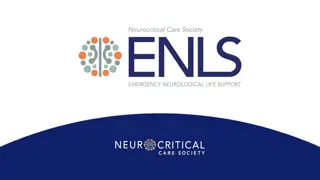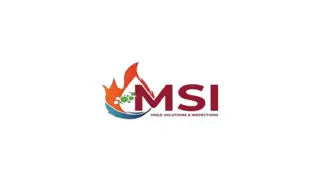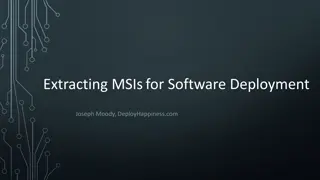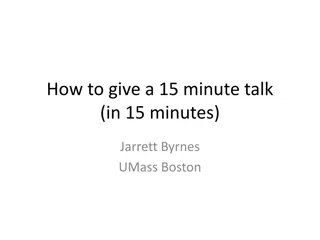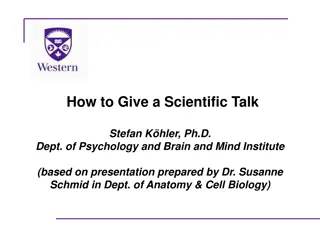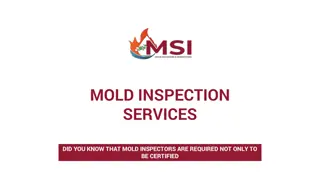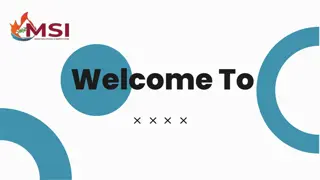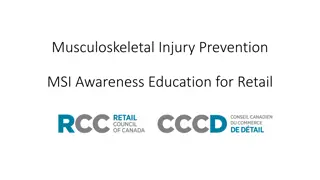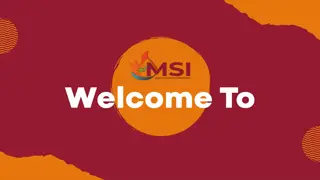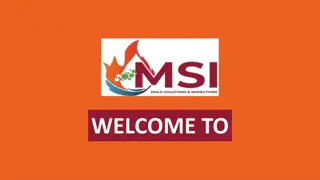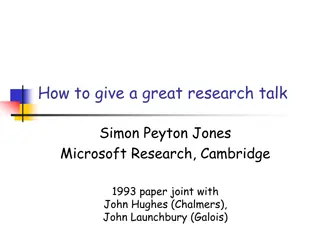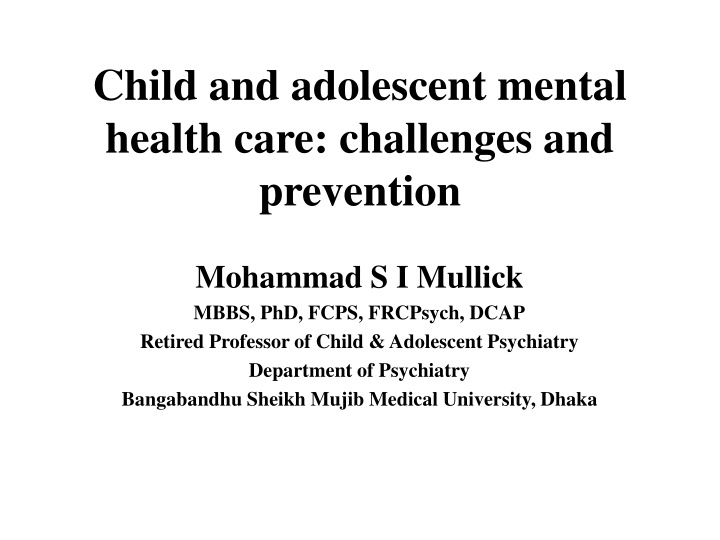
Challenges in Child and Adolescent Mental Health Care
Explore the evolving landscape of child and adolescent mental health care, highlighting the significant development, emerging issues, and the impact of factors like the COVID-19 pandemic. Delve into the complexities of conditions, aetiology, continuity, and the increasing burden faced by families.
Download Presentation

Please find below an Image/Link to download the presentation.
The content on the website is provided AS IS for your information and personal use only. It may not be sold, licensed, or shared on other websites without obtaining consent from the author. If you encounter any issues during the download, it is possible that the publisher has removed the file from their server.
You are allowed to download the files provided on this website for personal or commercial use, subject to the condition that they are used lawfully. All files are the property of their respective owners.
The content on the website is provided AS IS for your information and personal use only. It may not be sold, licensed, or shared on other websites without obtaining consent from the author.
E N D
Presentation Transcript
Child and adolescent mental health care: challenges and prevention Mohammad S I Mullick MBBS, PhD, FCPS, FRCPsych, DCAP Retired Professor of Child & Adolescent Psychiatry Department of Psychiatry Bangabandhu Sheikh Mujib Medical University, Dhaka
Talk plan Highlighting major changes of CAMH issues and its cumulative effect Focusing on the key concerned CAMH problems Pointing the areas of proposed action Stating prevention strategies and techniques Concluding notes
Introduction Child andAdolescence Mental Health Care Remarkable development in the last century Significant advancement in Bangladesh in its brief history (1998-2021) Disproportionate progress
New look of old issues Rate Steadily increasing- 1 in 10 to 1in 6 More in transitional period During COVID pandemic- jumped 2-3 times Effect of pandemic over rate will remain at least another 2 year
New look of old issues Types Increase rate of ASD, depression, suicide, self- harm, conduct, substance missuses Emergence of new problems- behavioural addiction, maltreatment related problems, personality disorders Increased psychosis among adolescents
New look of old issues Aetiology Increasingly complex than thought Interreacting nature of diverse determinants GXE interaction: Environmental factors appear to play greater in genesis of psychotic disorder than genetic factors among adolescents
New look of old issues Continuity Findings support more continuity than expected Overall 40% and above-adulthood to life long
New look of old issues Impact Increasingly substantial mainly in the form of academic underachievement, interpersonal difficulties
New look of old issues Burden Over families-higher blended with increased rate of parental psychiatric disorders and unhealthy home environment Over services-enormous Over society-serious near and far
New look of old issues Intervention Low coverage mainly due to vast discrepancy of service need and provision Narrow pathway of care
Barrier remains Low understanding Less concern Incomprehensive plan Scarcity of resources Inequality in the distribution of resources Increasingly unfavourable nurture
Increasingly burning key CAMH problems Depression Suicide and self-harm Addiction ASD and NDD Comorbidities
Increasingly burning key CAMH problems Depression Cardinal burning issue and growing public health concern Rate 2-8 % 10-13%(increasing over age, highest 12-17 years) Related with increased rate of suicide and self-harm among adolescents Significant proportion of them are treatment refractory
Increasingly burning key CAMH problems Suicide Crucial public health problem for children and adolescents around the world 3rdleading cause of death Increasing trends, become doubled within decades 7.4/100,000 World wide (Highest 15-19 years) Boys 2-3 times than girls
Increasingly burning key CAMH problems Suicide 0.5 for girls and 0.9 for boys/ 100 000 among 5-14-year-olds 12.0 for boys and 14.2 for boys/ 100 000 among 15-24-year-olds Possible explanations include increased rates of alcohol and drug abuse, depression, family and social disorganization, and access to firearms
Increasingly burning key CAMH problems Self harm Increased trends-range increased by 25% within 2 decades Extending to lower age-10 years and below Rate-3.4-4.5% worldwide 9% teens engaged in Digital self-harm
Increasingly burning key CAMH problems Self harm Peak rates were observed among 15-19-year- old females (564 per 100,000) and 20-24-year- old males (448 per 100,000) Marked increases in specific methods including those associated with high lethal
Increasingly burning key CAMH problems Addiction High rates of substance misuse already exists Increasing trends with diverse substance and behavoral addiction Cyberbullying is added issue of techno- addiction Proved as risk factors of depression and other disorders and vice versa
Increasingly burning key CAMH problems ASD and NDD Increasing rate-cause not clear Level of specific causal understanding and intervention is low than the expected target
Increasingly burning key CAMH problems Comorbidities Interacting nature of internalizing and externalizing problems One of the key concerned areas in clinical practice
Proposed action Fixing research priority A revised strategic plan Redesigning CAMHS in the light of broader public health needs is necessary
Proposed action Research priority Developing research questions emerging from a priority-setting exercise Service based research-for quick translation of the findings to clinical practice
Proposed action Research priority Nosolological research- redefined disorders with the aim of increased diagnostic validity Research on causal mechanism to improve classification system Exploring protective factors
Key Prospect and advances in research ASD- identifying causal genes, early detection, neuromodulator drugs PAX-101 (IV suramin), an investigational drug-Phase 2 trial ADHD- causal genes, effective anti-ADHD, neuromodulators, neurostimulation
Key Prospect and advances in research PTSD- Genetic transmission- prevention OCD- Causal-genetic, infection; anti-OCD, neurostimulation MDD- First track antidepressants, Ketamine anti-inflammatory agents, neurostimulation- TMS
Proposed action A revised strategic plan considering Cost-effective promotion, prevention and intervention Well known systemic services are neither affordable nor practical
Proposed action A revised strategic plan considering Nonspecialist based services Redefining role of mental health specialists Integrative services with multi-agency involvement
Proposed action Redesigning CAMHS Make funding available so all sick children and families can access to CAMHS
Proposed action Redesigning CAMHS Increasing the workforce considering projected burden -Provision more training to create core trainers -Increasing manpower for quality and quantity of the non-specialized services
Proposed action Redesigning CAMHS Prioritizing service need-investment vs outcome Accelerate integration of CAMH care in pediatric care
Proposed action Redesigning CAMHS Developed and support effective models of school mental health care Creating systems for supporting family Increase access to telehealth
Proposed action Redesigning CAMHS Education: People, Parents, Teachers- Mass education and educational curriculum Parental mental health management Maternal mental health- screening during maternity care
Proposed action Redesigning CAMHS Developed and support effective models of school mental health care Creating systems for supporting family Increase access to telehealth
Proposed action Redesigning CAMHS Address ongoing challenges of the acute care needs of children and adolescents Adopt preventing strategies
Preventive strategies Education for understanding Identifying and working with potentially risk population Modifying risk and protective factors
Preventive Techniques School/classroom based Community based Parent based Family based
Preventive Techniques The Life Skill Training Program (LSTP) Parent Management Training (PMT) Family-based Approach Mindfulness Nutrition
Preventive Techniques Wellness activities- play, exercise Healthy free time activities-art, music, reading, gardening Green care
Conclusions New look is necessary to evaluate established facts and findings Depression, suicide & self-harm, and addiction are the most burning public health problems among children and adolescents Existing care is insufficient and inefficient to combat the huge need
Conclusions Urgent initiative is necessary to improve the access to and quality of care across the continuum of mental health promotion, prevention, and treatment Sharing task load with sharing resources Establishing the system of cooperation in the perspective of global psychiatry


